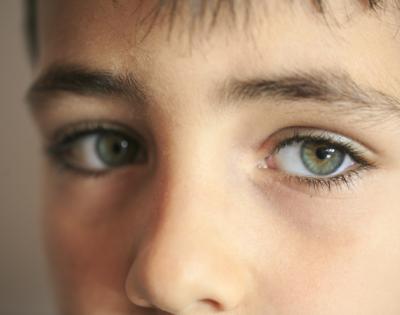
When something bad happens to us, the whole body remembers it. Negative thoughts can get stuck in places where talk therapy just can’t reach. Kids might not be able to express traumatic or disturbing memories – “icky” or “mixed up” thoughts and feelings, as Grand Forks Village therapist Janet Amundson describes them.
That’s one reason Janet loves a type of therapy called Eye Movement Desensitization and Reprocessing, or EMDR.
EMDR is an evidence-based tool that helps clients replace negative beliefs with positive ones by alternately stimulating the two sides of the brain through sight, sound, or touch.
Emergency responders and veterans have used EMDR with great success. It can also be useful with young clients who have experienced trauma, even 3- and 4-year-olds, Janet says
Kristie Majette, a Village therapist in St. Cloud, has also seen positive results from using EMDR.
“I truly believe every person who comes in this door, kids especially, have the ability to get through whatever they are facing,” Kristie says. “EMDR allows people to heal their trauma, and they actually don’t have to say it to me if they don’t want to. They can just say ‘it got scary.’ But they can keep healing because it’s all happening with the bilateral stimulation and their brain.”
For kids, trauma may be an isolated event, like an accident or a loved one’s death, or it can be chronic, such as physical or sexual abuse or caregivers who struggle with addiction or mental illness. “We’re seeing so much more of it, more complex trauma, and trauma at younger ages,” Janet says.
People may think kids under age 5 don’t remember traumatic experiences, but that’s not true, Janet says. “Their body remembers, but they can’t express it, so it comes out in play or comes out in behavior or as anxiety.”
Janet describes trauma this way: We each have a filing cabinet, and every day your memories get filed away. Trauma, because it’s so intense, places a big rock in front of the cabinet. Files start to stack up around the room, until it’s full.
EMDR helps clear out that room and place the files where they’re supposed to go.
“It teaches your brain how to get this memory unstuck from ‘it’s still happening’ to ‘it doesn’t have control of me anymore, it’s just a memory,’ ” Kristie says.
A variety of tools are used in EMDR. Janet often uses stories, coloring, beeping headphones and buzzers. If clients don’t like the buzzers, Kristie will tap the back of their hands with their permission.
Switching the buzzing sensation, beeping, or tapping between the left and right sides of the body mimics the back-and-forth eye movement that happens during REM sleep, when the brain processes memories for the day.
No single therapy is right for every person, but both Kristie and Janet appreciate having another option to help clients with a wide variety of issues, including depression, anxiety, PTSD and bullying.
“When they can come in here and say ‘I thought of that bad thing and it didn’t bother me anymore,’ that’s the best part,” Kristie says. “It’s hard work in here, but so worth it.”
For more information about EMDR, counseling, or other Village services, call the location nearest you or contact us online.




